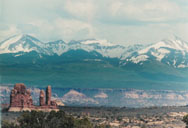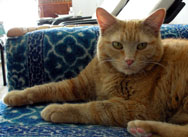Here is my schematic I drew up and used for my measurements. (click for full size)
 The back slot goes all the way to the bottom, and it tall enough for the long envelopes, #10. The second slot goes down to the top of the drawer (tall enough for #6 3/4), so the drawer compartment is totally enclosed and does not go all the way to the back (the drawer is big enough for #10 envelopes). Then the three compartments in the front are for things like stamps, labels, paper clips, whatever and a pen holder. I didn’t measure and cut out the piece for the drawer until the whole thing was put together, because I knew there would be a mistake somewhere and I’d just end up recutting the drawer.
The back slot goes all the way to the bottom, and it tall enough for the long envelopes, #10. The second slot goes down to the top of the drawer (tall enough for #6 3/4), so the drawer compartment is totally enclosed and does not go all the way to the back (the drawer is big enough for #10 envelopes). Then the three compartments in the front are for things like stamps, labels, paper clips, whatever and a pen holder. I didn’t measure and cut out the piece for the drawer until the whole thing was put together, because I knew there would be a mistake somewhere and I’d just end up recutting the drawer.The footprint is more than 6” x 10”; the bottom piece is 6 x 10, but the sides and back come down around the outside of the bottom piece. The only pieces that I doubled the thickness of cardboard were the sides and bottom. In the future, I will make the back double thickness too, because it was a real pain getting that part flat. (The double thick parts stayed flat after they got wet from applying the base paper, because they were thick enough to resist warping. The back, though, got very disfigured after applying the paper, and it was difficult getting a flat heavy thing tucked in there to flatten it as it dried. It took multiple attempts of rewetting and flattening.)
Here is at least one cut-out of each piece needed (except drawer), using the watercolor matte:
 There ar 10 individual pieces, not counting the ones that get 2-ply (back, if you choose, both sides, bottom). Here are my templates with their measurements for each piece. They are notebook paper, so it may be hard to tell where the edge is in some pictures. I would go with the measurements and draw up my own:
There ar 10 individual pieces, not counting the ones that get 2-ply (back, if you choose, both sides, bottom). Here are my templates with their measurements for each piece. They are notebook paper, so it may be hard to tell where the edge is in some pictures. I would go with the measurements and draw up my own:











I wrapped the following pieces separately from the unit as a whole: back slot divider, front slot divider, short divider, tall divider, top of draw compartment, front (see diagrams from part II). These were set between large flat heavy things with newspaper so they would dry flat. The rest (two sides, back, and bottom) were taped together (purple is cardboard in the picture)
and a single piece of the base paper was use to cover the outside with tabs to wrap around to the other side of the cardboard.
In hindsight, I could have done the bottom panel as a separate piece, so that I would have tabs from the sides and back pasted to the bottom, and then a separate piece would cover those tabs, the whole bottom, and then a tab would come up around the front into the drawer compartment. So, with all those tabs wrapped around to the inside of the structure, separate pieces are used as facing to cover the tabs.
To get that one big piece of base paper to cover the sides, back, and bottom, I laid the taped-together unit on its back, made an outline with the chalk pencil, carefully rotated it onto a side, made another outline, other side, outline, onto the bottom (so it’s sitting upright now), outline. You end up with a multi-segmented contiguous piece of paper. From the outline you can cut tabs, but it’s better to cut the tabs a little big to make some overlap so the corners get covered well. When cutting the tabs, remember that they’re going to have to go around a 1/8” thick piece of cardboard, so make them on the long side. Making it so that a half inch of tab is actually on the other side of cardboard is fine.
So now the bare-bones unit should be totally covered in base paper: the one big piece on the outside, and the separate ones to cover each face on the inside. Now you can start putting in your individually wrapped dividers that hopefully are still nice and flat. Even though I had very precise measurements (to the 1/16") I just moved the pieces around until they hit both the bottom and the slanted top in the right place. I glued them into place and then used strips of base paper softened in paste the same as if they were pieces of tape. The edges blend in so well that I did this strip method on the front divider piece in plain view (mostly to cover up the seam between this piece and the side) and I can’t see where it is now. So continue with the gluing and the pastey strip method to get all the individual dividers into place. Unsightly seams, joints, unions, whatever, can be covered up with the pastey strip method, with the strips cut to the exact length of the seam to be covered.
Now the only things that should be left are making the actual drawer and putting on the fancy paper. Measure the drawer compartment that remains, and keep in mind that you don’t want too snug of a fit. You can cut the drawer in one piece, and score the four edge to fold up and then tape together. I totally covered the drawer in base paper, but if you want to only do the inside and the first half or so of the front and sides, that’s fine. Just keep in mind what will be visible and what won’t be. I used two pieces of base paper, one for the whole outside, along with tabs like I did for the outside of the larger unit, and then another piece to fit in the bottom and up the sides of the inside of the drawer.
So now hopefully you have the whole thing done and covered in the base paper. We’re in the home stretch! Cut your fancy paper pieces smaller than the face it is covering. I was aiming for something like 1/8” of base paper showing around the edges of the fancy paper. The washi and yuzen papers soak up the paste wonderfully, compared to the black paper I had for the base. Be careful also that the fancy paper doesn’t stretch or expand too much: the long rectangle on the front of the drawer was probably half an inch or more longer wet than it was dry! Apply the same as before, with smoothing from the sponge and wiping off the excess paste. To apply the handles on the drawer I had to drill pilot holes and then screw them in. Sometimes I can just screw them right in without any help (I think this depends on the kind of cardboard).
Yay! You’re done! I hope it’s pretty!













No comments:
Post a Comment